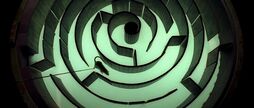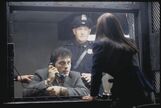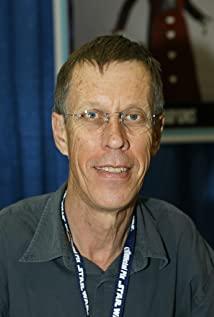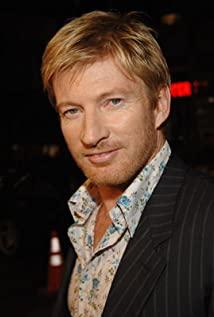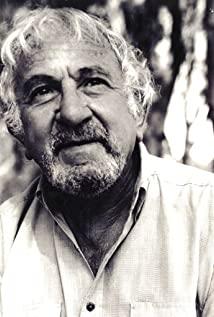Disclaimer: This article is a personal work, and no one may intercept, reprint, plagiarize, or use it for commercial purposes without authorization.
Proyas' Dark City : Hidden Realities and Hidden Fantasies
Coincides with a growing anxiety over negative usage of advanced technologies, Alex Proyas' Dark City(1998) explores the epistemological and ontological issues through suspense story. In the movie, people live in the “apparent” world, while their memories are frequently usurped and manipulated by The Strangers, an all-mighty (in the sense of controlling time and deform objects) alien species. The protagonist John Murdock realizes the artificial quality of the society and overthrows the management by The Strangers. While audiences follow John's adventures to discover the hidden reality in the movie, they constantly and unconsciously employ fantasies to rationalize the unsatisfactory in social life. By questioning the validity of John's “bright city” as the reality, they entangle with an ontological crisis of the world we live in.
Names of characters in Dark City demonstrate metaphors over unreliable concreteness of our world. John Murdock's name is resonant with classical Gnostic text The Secret Book According to John(c. 180 AD), and his experience represents an allegory of moral world in Gnosticism (Wilson, 2006). In Gnostic universe, most people do not question the being of substances. Not only do they follow the misconception, but they never realize the possibility of alternative reality. At the same time, a minority feels a sense of incongruous of the world. By investigating the “hidden” qualities of the universe, they may reject matters and enter the realm of spirits and “truth (ibid.) .” Moreover, Dr. Daniel Poe Schreber, serving The Strangers and secretly helping John, possibly names after a 19th century German judge Daniel Schreber, who had been interpreted by Freud through psychoanalytic framework. Dr. Schreber's middle Poe reminds us of Edgar Allan Poe , whose fiction discussion the manifestation of a city and the idea of an outsider, observer,and flâneur (Fitch, 2019).
Possessing the intention of addressing the fakeness of worlds, Dark City expresses paranoia on epistemological limits to understand the reality. The characters and audiences resolve the gap between apparent and hidden reality by suspecting everything, either the general worries of suppressive ideology with brainwashing power (Wilson , 2004) or specially about the proliferation of monitoring technology (Fitch, 2019). John Murdock has a natural advantage to realize the irrationality of the world he lives in, since he is “reborn” into a skeptical condition. Knowing nothing about himself or the society around him, John engages in an epistemological struggle that most residents never could or need to have.
In the specific case of Dark City , the essence of one's identity which makes one unique has three possible sources: physical body, personality, and memories. The movie doesn't offer a clear answer itself. Towards the end, John shows affection to Anna , who only shares the outer appearance of Emma, the women he actually loves. For the second option, Fitch (2019) suggests that the connection between memory and identity is less about confirming authenticity of the past but about addressing the present and constructing for the future. The Strangers in Dark Cityconsider memory as independent variable in the experiment to find out the core of individual, indicating its insignificance. However, John is told about the “meaning” of his life by Dr. Schreber in an injection of memories, and by depriving and modifying its residents ' memories, Dark City does confine people in an “eternal present (ibid.)” or Hegelian bad infinity, in which they endlessly working on one transient task after another, yet never getting lose to the desiring object a . The movie sketchily concludes personality as the answer, which is still problematic if taking social conditioning into account.
Many scholars discuss the integration of fictions and reality in movie and its functions to audiences. Dark City happens in a retro environment, a pastiche both appropriating styles from elder age and adopting advanced future technologies (Fitch, 2019). It also presents a mixed reality , where technology-intensive simulations coincide with real world issues (Hayles and Gessler, 2004). The science fiction or slipstream fiction (ibid.) setting of Dark Cityintegrates audiences' fantasies and real-life experience in a certain method and degree. On one hand, the movie delivers a fictional texture without disrupting components (ibid.), presenting a neuroticzied reality which makes fantasies and characters' adventures accessible to audiences while contains subjects within the social law (McGowan, 2007). On the other hand, “The Cinematic City” of Dark City sensitizes audiences to a realm of previously unnoticed aspects in daily life (Fitch, 2019), extending the Gnostic paranoia outside of the silver screen.
The Gnostic paranoid is passed to audiences in a sarcastic style. Although John's promising bright city contradicts with the depressive dark city of The Strangers, its artificial nature never changes. If the audiences are deceived and consider the reunion of John and “Emma” at Seashell Beach as a happy ending, they are the aimless residents in dark city themselves, believing in illusions as reality. Authorities and villain-looking agencies are visible targets of prohibition, that characters in movies and subjects in real life blames them for impeding them from pursuing the imagined object a , while hoping the Other continues to maintain orders and stability. That is why movies with epistemological concerns, such as Dark City, often show an anachronistic quality (Fitch, 2019). Otherwise, audiences will realize the ontological crisis in their own world and start to suspect the validity of everything.
Work cited:
Fitch, Alex. "Dark City And The Truman Show: Surveillance And The Destabilization Of Identity". Film Criticism , vol 43, no. 2, 2019. University Of Michigan Library , doi:10.3998/fc.13761232.0043.203.
Hayles, N. Katherine, and Nicholas Gessler. "The Slipstream of Mixed Reality: Unstable Ontologies and Semiotic Markers in The Thirteenth Floor, Dark City, and Mulholland Drive". PMLA , vol 119, no. 3, 2004, pp. 482- 499. Modern Language Association (MLA) , doi:10.1632/003081204x20541.
McGowan, Todd. The Real Gaze. State University Of New York Press, 2007.
Wilson, Eric G. "Gnostic Paranoia in Proyas's Dark City". Literature/Film Quarterly , vol 34, no. 3, 2006, pp. 232-239. FIAF International Index to Film Periodicals .
View more about Dark City reviews



